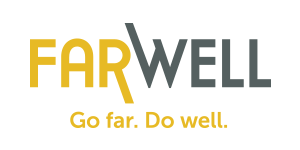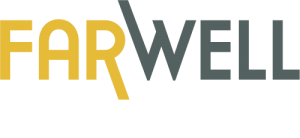Discover advisor articles and other FarWell resources.
Go far. Do well. Call (800) 987-2015
Connecting Strategy to Execution through Organization & Solution Capability Mapping

From Chaos to Clarity: The Power of Work Breakdown Structures
September 26, 2024
How to Effectively Manage Multiple Projects Simultaneously
November 13, 2024Connecting the dots between organizational goals, operational models, and digital solutions is no easy task. This is where Enterprise Architecture (EA) comes in, acting as a critical link between strategy and execution and ultimately, value realization. By providing a framework to ensure organization capabilities and processes are harmonized with digital solutions, EA paves the way for organizations to set ambitious goals and to have the means to achieve them effectively. In this blog, we will delve into the essence of Enterprise Architecture, its transformative power, and how firms like FarWell leverage EA to help their clients drive success.
Understanding Enterprise Architecture
At its core, Enterprise Architecture is about aligning the outcomes an organization needs to achieve with an operating model and solution capabilities required to deliver those results. Think of it as an umbrella framework that encompasses the “Enterprise” – Strategy, Operations, and Technology. In the image below you will see how these three make up the triad of EA.
- Strategy: Focuses on the mission, vision, and values of the organization.
- What are the strategic themes or objectives?
- What are the results or valuable outcomes the organization needs to achieve?
- Operations:
- Involves the structural and cultural elements of the organization. How are teams organized? What are the communication channels and decision-making processes?
- Focuses on the processes and workflows that drive the day-to-day activities. How efficient are these processes? Where can improvements be made to enhance productivity and reduce waste? How does the data flow through the organization?
- Technology: Covers the IT infrastructure, solutions, and tools that support the operations.
- How well does the technology align with organizational needs?
- Is it scalable and adaptable to future requirements?
Source: 2011 The Open Group
The Strategic and Transformative Role of EA
Enterprise Architecture serves as the critical intermediary between high-level strategic objectives and the actionable plans required for execution. This creates a clear, achievable path toward the goals, and enhances an organization’s ability to integrate strategy, operations, and technology into one actionable blueprint.
One of the standout benefits of EA is its ability to drive organizational transformation. By engaging stakeholders across the value chain, or the full lifecycle of a product, EA fosters a collaborative environment that allows different parts of the organization to work together seamlessly. This holistic approach helps create a matrix organization that is agile – not in the sense of a specific methodology, but in its ability to adapt quickly and efficiently to changes.
How FarWell Implements Enterprise Architecture
At FarWell, EA is often one of the first steps we explore when engaging with clients. The practice involves working with organizations and IT leaders to review the strategy, identify organizational capabilities, and design roadmaps that connect strategy and execution. Once these strategic roadmaps are in place, FarWell assists clients in portfolio planning and prioritization. We evaluate the existing project portfolio to identify gaps and alignment issues and prioritize projects and initiatives based on their strategic value, resource requirements, and risk factors.
The next step involves conceptualizing and defining programs and projects that align with strategic objectives. Feasibility studies and organization case analyses are conducted for proposed initiatives to assess their viability and potential value, and when programs and projects are well-defined, oversight management and execution support is provided through expert project and organizational change management. Progress is continuously monitored, risks and issues are proactively managed, and decision-making is facilitated to ensure projects and objectives deliver their intended benefits.
Real World Examples
Madison, Wisconsin, Non-Profit
A Madison, Wisconsin, non-profit was challenged by a series of programs and membership capabilities that grew over time but lacked a cohesive operating approach.
By mapping out their organizational capabilities and identifying similarities across the various programs, strategic growth needs, current pain points, regulations, and privacy data, the organization came to a consensus. It was determined that their members interacted with the non-profit through each program or service during their long careers in a membership lifecycle.
Getting members into as many services as applicable at the right time in the lifecycle, would help build membership while providing a better experience for existing members. With the desire to manage communications to members, a shared database was used to facilitate the member journey and critical lifecycle touchpoints.
The FarWell EA team:
- Helped to streamline operations
- Identified critical data needs
- Reduced IT infrastructure and related costs
- Provided a new solution to help increase membership engagement and grow the non-profit programs and services
A Craft Manufacturer
A craft manufacturer and distributor planned on growing their organization by adding complimentary products. For the organization to be more agile, the processes from customer contact and estimating to field service delivery needed to share customer, product, and service data. This sharing of data was essential to enhance the organization’s capabilities, build operational efficiencies, and improve customer experience.
EA played a vital role in detailing everything needed to create their final products to delivering warranty services in the customers’ homes.
FarWell worked with the organization’s leaders to:
- Understand future process needs
- Prioritize each functional area’s unique challenges.
Executives were provided with clear insights into potential risk, financial models for estimated costs, and a roadmap and plan on how to get there over three years.
EA’s detailed planning covered all aspects, including:
- Internal and external resourcing
- Critical path dependencies
- Growth factors
By managing all these aspects, FarWell ensured the project stayed on track and within budget.
Navigating Challenges and Ensuring Success
One of the common challenges faced when using EA is getting executive buy-in. To overcome this, the value and benefits of EA must be effectively communicated. Here are several methods to help get your executives on board:
- Quantify Organization Impact: Translate the value of EA into tangible metrics that resonate with executives, such as cost savings, revenue growth, risk mitigation, and operational efficiencies. Use data-driven analysis and real-world examples to illustrate the impact of EA.
- Highlight Alignment with Goals: Articulate how practicing EA aligns with the organization’s strategic objectives and will enable better decision-making, resource allocation, and risk management. Demonstrate how it provides a comprehensive view of the enterprise and will facilitate more informed choices.
- Leverage Success Stories: Share the success of other organizations that have successfully implemented EA. Be honest about any obstacles they faced, but also showcase how they overcame them and the benefits they realized. Relatable examples can help executives visualize the potential impact.
- Involve Executives Early: By engaging executives early and seeking their input, you will ensure that you can address their concerns and that EA initiatives will align with their priorities. Effectively communicating the value proposition and involving executives throughout the process will help overcome resistance and gain the necessary buy-in to drive successful enterprise-wide transformations.
How Do I Get Started?
Many organizations recognize the value of Enterprise Architecture as an essential strategy to help accelerate the use of digital technologies to grow revenue, optimize costs, and mitigate risks, yet struggle to implement it effectively. Here are some practical tips for getting started with EA or maturing an existing EA practice:
- Understand your enterprise and build the right level of EA capability: Understand the issues, opportunities, threats, and risks surrounding your organization and operating model, as well as what data is important to drive to desired outcomes. Then determine how much EA to introduce based on the needs of your organization and stakeholders.
- Construct a value proposition and communicate: In many organizations there is a lack of clarity around what EA does, how it works, how it adds business value, and how it is measured. Create a compelling EA value proposition document by getting input from identified stakeholders, business leaders, and product teams, for what they need and value. Ensure your value proposition is appealing, enticing, and credible to the stakeholders pitched, and how EA would help solve them.
- Get stakeholder buy-in and measure progress: Building an EA Charter requires getting stakeholder buy-in and engagement. Focus on empathy, gaining a deep understanding of stakeholders’ needs and shaping EA offerings that meet those needs. Create measures, track and communicate your progress to your stakeholders.
- Assess Organizational Structure and Align EA: Assess where your organization is at and implement a flexible EA organizational structure that can simultaneously execute projects and products and enable distributed delivery. Engage your CIO, so that the maturing EA organizational structure moves in lock step with the evolving IT operating model.
- Determine the Skill Sets and Staffing: To deliver digital or other transformational changes an EA practice needs a staffing plan to go with the organizational structure. The plan must identify the different kinds of architects required, their quantities, skill sets, and the tasks they will perform to deliver projects and products. Work with Human Resources to hire the right skill sets to meet the needs of the EA practice you want to build.
Enterprise Architecture is an ongoing practice that evolves. It is a vital component for any organization looking to achieve its strategic goals while managing risks and enhancing operational efficiency. By aligning the triad of strategy, operations, and technology, EA provides a comprehensive framework for navigating the complexities of a modern operation. Through effective engagement and execution, EA transforms organizations, making them more agile, resilient, and successful.
-Written by Karen Semonson, FarWell Senior Advisor




